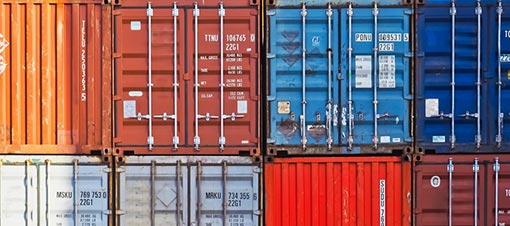News
NEWS CENTER
Logistics operation is stable with progress, and the total logistics volume maintains growth - a perspective on the development of logistics in China in the first 7 months
 Release time : 2025-09-01
Release time : 2025-09-01  page views : 67
page views : 67 The China Federation of Logistics and Purchasing recently released logistics operation data for the first seven months of this year in China. From January to July, the total amount of social logistics in China was 201.9 trillion yuan, a year-on-year increase of 5.2% calculated at comparable prices; The total amount of social logistics in July increased by 4.9% year-on-year. The logistics operation continues to develop steadily with progress, and the total amount of social logistics maintains stable growth.
From January to July, the total amount of industrial logistics in China increased by 5.7% year-on-year. The foundation of industrial logistics is more solid and diversified, with continuous expansion of growth in multiple dimensions. Logistics demand in 35 industries has achieved year-on-year growth, with a growth rate exceeding 85%; The output of 335 products increased year-on-year, with a growth rate exceeding 50%.
From January to July, the total logistics volume of goods between units and residents increased by 6.2% year-on-year, an increase of 0.1 percentage points compared to the first half of the year. The online retail sales of physical goods increased by 6.3%, which is 1.5 percentage points faster than the growth rate of the total retail sales of consumer goods in society. Real time retail, live streaming sales, and other new forms of consumer assistance have simultaneously improved physical retail. The growth rate of logistics demand generated by warehouse member stores has continued to exceed 30%, indicating the coordinated development of online and offline logistics demand.
The collaborative efforts in high-end manufacturing, digital intelligence, green and low-carbon fields have become an important engine leading the upgrading of logistics demand. In July, the logistics demand related to high-tech manufacturing above designated size increased by 9.3% year-on-year, and the growth rate of high-end products such as analog chips, 3D printing equipment, industrial control computers and systems exceeded 20%; The logistics demand for digital product manufacturing above a certain scale increased by 8.4%, and the logistics volume related to the robotics industry increased by over 10%; The volume of new energy products such as new energy vehicles and lithium-ion batteries has increased by around 20%.
Driven by policies such as large-scale equipment updates and boosting consumption, the logistics of goods between units and residents, as well as the logistics of recycling of renewable resources, have maintained rapid growth, bringing new vitality to the overall logistics demand growth, "said He Hui, Vice President of the China Federation of Logistics and Purchasing.
In terms of the logistics market, from January to July, the total revenue of China's logistics industry was 8.2 trillion yuan, a year-on-year increase of 4.9%; The total business volume index in July was 50.5%, continuing to expand. The new order index for logistics companies in July was 52.5%, indicating a recovery in business operations.
From the perspective of regional structure, the growth momentum of the central and western regions has increased. The total business volume index in the western region reached 52.3%, while that in the central region was 50.9%, which were 1.8 and 0.4 percentage points higher than the national level respectively, indicating that the growth momentum of logistics demand in the central and western regions continues to strengthen. The index of the eastern region is 50.3%, maintaining a steady growth trend, and a regional coordinated development pattern is taking shape.
International logistics has become a new growth point. The Central Asia Express has operated 8526 trains, up 23.2% year on year, and the China Laos Railway has delivered 3.441 million tons of cross-border goods, up 6.4% year on year. The diversified foreign trade policy has driven the rapid growth of international railway intermodal transport in key regions and key nodes; Driven by demand from cross-border e-commerce and other industries, international air routes have completed a cargo and mail transportation volume of 388000 tons, a year-on-year increase of 21.5%, providing strong support for smooth domestic and international circulation and ensuring the smooth operation of the supply chain upstream and downstream.
Livelihood consumption and basic energy security are strong. From the perspective of e-commerce logistics for service consumption, the consumption potential of counties and townships continues to be stimulated, and logistics support and guarantee are effective. In July, the total e-commerce logistics volume index was 130.9 points, and the rural e-commerce logistics volume index was 131.5 points, up 1.1 points from the previous month. From the perspective of railway transportation that serves energy security, during the peak summer season, the transportation of electric coal is strongly guaranteed, and key materials should be fully loaded and efficiently delivered. From January to July, the national railway sent 1.196 billion tons of coal, including 816 million tons of thermal coal. The coal stored in railway direct power plants remained at a high level. The transportation volume of mining and construction materials, smelting materials, and grain increased by 13.6%, 8.2%, and 12.7% respectively year-on-year. The logistics supply in the basic energy sector was stable and efficient.
Overall, since the beginning of this year, China's social logistics operations have continued to show a steady and progressive development trend. Logistics demand has maintained growth, and the logistics market has continued to expand with further optimization of its structure. Liu Yuhang, director of the China Logistics Information Center, said that in the next stage, the continuity, stability, and flexibility of relevant policies are expected to be enhanced, creating a more orderly and healthy development environment for logistics operations.




 8618366223659
8618366223659